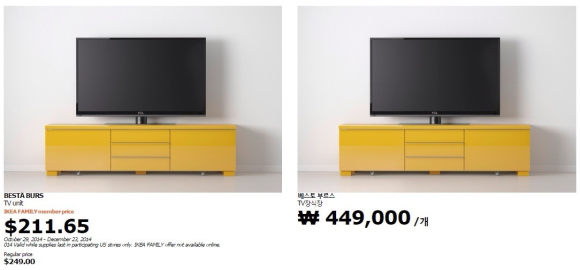
It’s a weird quirk of the global economy that sometimes the exact same item can sell for very different prices depending on what country you’re in. For example, in the U.S. Levi’s jeans cost about half what they do in Japan.
As a result, I always wait until I’m taking a trip back to L.A. before I buy a pair of Levi’s. Unfortunately, that’s probably not an option for travelers who want to take back furniture from IKEA, which in Korea sometimes costs 80 percent more than it does in the U.S.
One of the iron laws of business is that products sell at the prices that people will buy them for, and not necessarily the cost of producing and delivering them. So, for example, IKEA’s decision-makers took a look at one of their TV stands, and calculated that American consumers would be willing to part with $249 for it.
▼ That $211.65 is the sale price, with the regular price at the very bottom left.
Meanwhile, the Swedish-based company’s South Korean team evaluated the same unit and felt that 449,000 won would be a reasonable expectation.
That six-digit price might be causing a bit of sticker shock, but it’s important to bear in mind that the won doesn’t get subdivided into smaller units like the US dollar does with cents. Still, though, 449,000 anything sounds like a lot, so just what does IKEA’s Korean price convert to?
US$410, or almost 65 percent more than American shoppers would pay for the exact same item.
The premium Korean customers pays shrinks, but by no means disappears, with this pricier TV cabinet.
The Korean price of 1,596,000 won works out to US $1,457, meaning Korean IKEA branches will still charge you more than 40 percent extra to set your living room up in style.
With such huge price differentials, it’s enough to kill your TV-watching enthusiasm entirely. Maybe it’d be better to just hit the sack early, so you can get up in the morning and show up at work full of energy and ready to make that IKEA-buying money.
Speaking of sleep, how do IKEA’s American and Korean bed prices compare?
▼ US$179 vs. 359,000 won (US$328), or an 83-percent increase
Even online commenters in Japan, a country used to paying higher prices for consumer products than many other countries, were shocked at the regional price differences.
“Damn. I would have expected more from IKEA.”
“Geez, IKEA too? Are Korea’s import tariffs so high they really double the cost?”
“The only thing ordinarily good about IKEA is that it’s cheap, but now…”
“Even though IKEA has locations there, I think we’re going to hear stories about Korean customers ordering from branches in other countries and having their furniture shipped to them.”
But hey, like we said, market prices get dictated by what people are willing to pay for them. If Korean consumers want to shell out more for IKEA than shoppers elsewhere, that’s their choice, just like coffee drinkers in China can choose to pay more for their Starbucks.
Of course, they also have the option to buy their furnishings elsewhere, until IKEA realizes that maybe it’s time to knock a won or too off their prices.
Source: Otonarisoku
Top image: Naver (edited by RocketNews24)
Insert images: SLR Club (edited by RocketNews24)

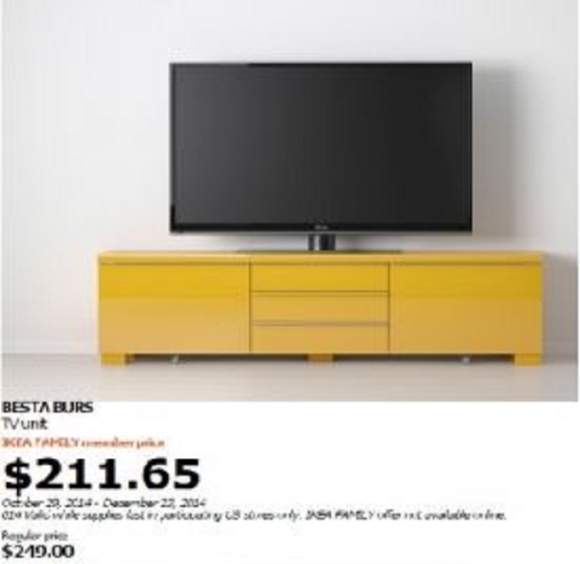
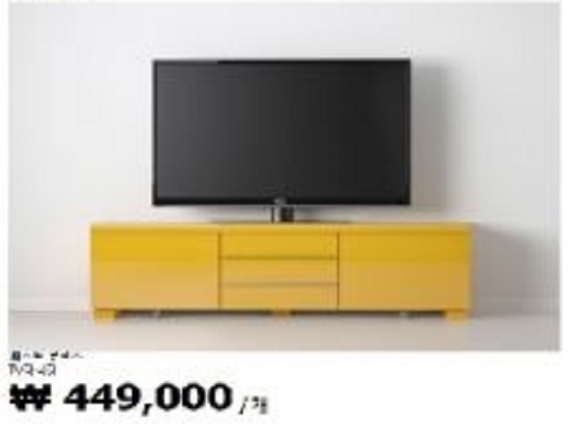
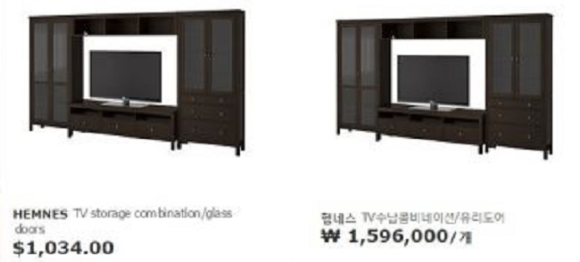
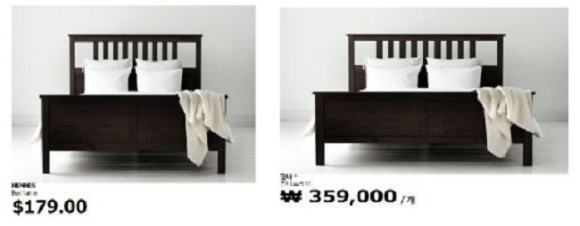
 Ikea Japan offering fully furnished apartment to rent for less than a dollar a month
Ikea Japan offering fully furnished apartment to rent for less than a dollar a month More Japanese schoolgirls think themselves overweight than those in China, Korea or the U.S.
More Japanese schoolgirls think themselves overweight than those in China, Korea or the U.S. We visit the limited-time IKEA café in Tokyo
We visit the limited-time IKEA café in Tokyo All You Can Eat salmon for 999 yen at IKEA’s Salmon Festival!
All You Can Eat salmon for 999 yen at IKEA’s Salmon Festival! No Swedish meatballs but carbs galore: ranking all 16 Harajuku IKEA flatbreads【Taste Test】
No Swedish meatballs but carbs galore: ranking all 16 Harajuku IKEA flatbreads【Taste Test】 McDonald’s new Happy Meals offer up cute and practical Sanrio lifestyle goods
McDonald’s new Happy Meals offer up cute and practical Sanrio lifestyle goods All-you-can-drink Starbucks and amazing views part of Tokyo’s new 170 meter-high sky lounge
All-you-can-drink Starbucks and amazing views part of Tokyo’s new 170 meter-high sky lounge More foreign tourists than ever before in history visited Japan last month
More foreign tourists than ever before in history visited Japan last month Starbucks reopens at Shibuya Scramble Crossing with new look and design concept
Starbucks reopens at Shibuya Scramble Crossing with new look and design concept Beautiful Sailor Moon manhole cover coasters being given out for free by Tokyo tourist center
Beautiful Sailor Moon manhole cover coasters being given out for free by Tokyo tourist center The oldest tunnel in Japan is believed to be haunted, and strange things happen when we go there
The oldest tunnel in Japan is believed to be haunted, and strange things happen when we go there Studio Ghibli glasses cases let anime characters keep an eye on your spectacles
Studio Ghibli glasses cases let anime characters keep an eye on your spectacles You COULD eat a terrifying octopus egg in Japan, but SHOULD you? Let’s find out!【Taste test】
You COULD eat a terrifying octopus egg in Japan, but SHOULD you? Let’s find out!【Taste test】 Is the new Shinkansen Train Desk ticket worth it?
Is the new Shinkansen Train Desk ticket worth it? Arrest proves a common Japanese saying about apologies and police
Arrest proves a common Japanese saying about apologies and police Disney princesses get official manga makeovers for Manga Princess Cafe opening in Tokyo
Disney princesses get official manga makeovers for Manga Princess Cafe opening in Tokyo We try out “Chan Ramen”, an underground type of ramen popular in the ramen community
We try out “Chan Ramen”, an underground type of ramen popular in the ramen community Beautiful new Final Fantasy T-shirt collection on the way from Uniqlo【Photos】
Beautiful new Final Fantasy T-shirt collection on the way from Uniqlo【Photos】 Foreign English teachers in Japan pick their favorite Japanese-language phrases【Survey】
Foreign English teachers in Japan pick their favorite Japanese-language phrases【Survey】 There’s a park inside Japan where you can also see Japan inside the park
There’s a park inside Japan where you can also see Japan inside the park Japanese convenience store packs a whole bento into an onigiri rice ball
Japanese convenience store packs a whole bento into an onigiri rice ball Studio Ghibli releases Kiki’s Delivery Service chocolate cake pouches in Japan
Studio Ghibli releases Kiki’s Delivery Service chocolate cake pouches in Japan Japan’s bone-breaking and record-breaking roller coaster is permanently shutting down
Japan’s bone-breaking and record-breaking roller coaster is permanently shutting down New definition of “Japanese whiskey” goes into effect to prevent fakes from fooling overseas buyers
New definition of “Japanese whiskey” goes into effect to prevent fakes from fooling overseas buyers Foreign passenger shoves conductor on one of the last full runs for Japan’s Thunderbird train
Foreign passenger shoves conductor on one of the last full runs for Japan’s Thunderbird train Our Japanese reporter visits Costco in the U.S., finds super American and very Japanese things
Our Japanese reporter visits Costco in the U.S., finds super American and very Japanese things Kyoto bans tourists from geisha alleys in Gion, with fines for those who don’t follow rules
Kyoto bans tourists from geisha alleys in Gion, with fines for those who don’t follow rules Studio Ghibli unveils Mother’s Day gift set that captures the love in My Neighbour Totoro
Studio Ghibli unveils Mother’s Day gift set that captures the love in My Neighbour Totoro Domino’s Japan now sells…pizza ears?
Domino’s Japan now sells…pizza ears? New Japanese KitKat flavour stars Sanrio characters, including Hello Kitty
New Japanese KitKat flavour stars Sanrio characters, including Hello Kitty Sales of Japan’s most convenient train ticket/shopping payment cards suspended indefinitely
Sales of Japan’s most convenient train ticket/shopping payment cards suspended indefinitely Sold-out Studio Ghibli desktop humidifiers are back so Totoro can help you through the dry season
Sold-out Studio Ghibli desktop humidifiers are back so Totoro can help you through the dry season Japanese government to make first change to romanization spelling rules since the 1950s
Japanese government to make first change to romanization spelling rules since the 1950s Ghibli founders Toshio Suzuki and Hayao Miyazaki contribute to Japanese whisky Totoro label design
Ghibli founders Toshio Suzuki and Hayao Miyazaki contribute to Japanese whisky Totoro label design Doraemon found buried at sea as scene from 1993 anime becomes real life【Photos】
Doraemon found buried at sea as scene from 1993 anime becomes real life【Photos】 Tokyo’s most famous Starbucks is closed
Tokyo’s most famous Starbucks is closed One Piece characters’ nationalities revealed, but fans have mixed opinions
One Piece characters’ nationalities revealed, but fans have mixed opinions We asked a Uniqlo employee what four things we should buy and their suggestions didn’t disappoint
We asked a Uniqlo employee what four things we should buy and their suggestions didn’t disappoint Princesses, fruits, and blacksmiths: Study reveals the 30 most unusual family names in Japan
Princesses, fruits, and blacksmiths: Study reveals the 30 most unusual family names in Japan Studio Ghibli’s new desktop Howl’s Moving Castle will take your stationery on an adventure
Studio Ghibli’s new desktop Howl’s Moving Castle will take your stationery on an adventure Halloween “Black Pancakes” and “Bloody Tunnbrod” coming to IKEA stores in Tokyo
Halloween “Black Pancakes” and “Bloody Tunnbrod” coming to IKEA stores in Tokyo Ikea’s cheap lucky bag captures the true essence of Japan’s fukubukuro tradition
Ikea’s cheap lucky bag captures the true essence of Japan’s fukubukuro tradition All-plant-based katsu curry arrives at Ikea Japan
All-plant-based katsu curry arrives at Ikea Japan Ikea hot dog lucky bag is one of the most unusual fukubukuro available in Japan this year
Ikea hot dog lucky bag is one of the most unusual fukubukuro available in Japan this year Infiltrate your stomach with the new IKEA “ninja dog”
Infiltrate your stomach with the new IKEA “ninja dog” Ikea Japan wants to furnish your stomach with matcha sweets with its new cafe dessert menu【Pics】
Ikea Japan wants to furnish your stomach with matcha sweets with its new cafe dessert menu【Pics】 World’s first Ikea convenience store opens in Harajuku, Japan
World’s first Ikea convenience store opens in Harajuku, Japan IKEA Japan lucky bags? We’ve got them covered!【2016 Lucky Bag Roundup】
IKEA Japan lucky bags? We’ve got them covered!【2016 Lucky Bag Roundup】 Clever Japanese pet owners find perfect cat beds…at IKEA! 【Photos】
Clever Japanese pet owners find perfect cat beds…at IKEA! 【Photos】 Bizarre photos of Chinese shoppers napping at Ikea
Bizarre photos of Chinese shoppers napping at Ikea 70% of South Koreans will donate to fund for unity with North, want US and China to cough up too
70% of South Koreans will donate to fund for unity with North, want US and China to cough up too Ikea celebrates New Year in Japan with a fukubukuro lucky bag filled with surprises
Ikea celebrates New Year in Japan with a fukubukuro lucky bag filled with surprises Chinese people busted sleeping in beds at Ikea in new online video
Chinese people busted sleeping in beds at Ikea in new online video Visit this Tokyo-area Ikea to find furniture, Swedish meatballs, goats, and — wait, goats?!
Visit this Tokyo-area Ikea to find furniture, Swedish meatballs, goats, and — wait, goats?!
Leave a Reply